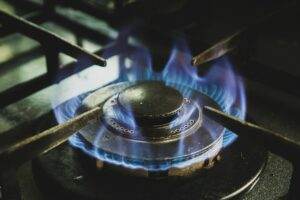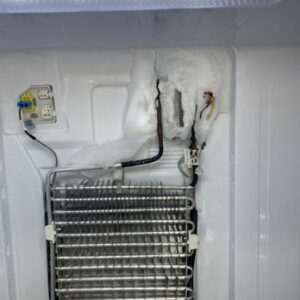A functioning dishwasher is an essential appliance in both household and business settings. It saves time and effort by efficiently cleaning and sanitizing dishes, utensils, and cookware. However, when a dishwasher malfunctions, it can be frustrating and inconvenient. Dishes pile up, and the task of handwashing becomes a time-consuming chore. In this article, we will discuss various troubleshooting steps to help you identify and fix common issues with your dishwasher.
Key Takeaways
- Check the power source to ensure the dishwasher is receiving electricity.
- Inspect the door latch to ensure it is properly closed and latched.
- Look for clogs in the drainage system to prevent water from backing up.
- Test the control panel to ensure all buttons and settings are functioning properly.
- Check the float switch to ensure it is not stuck and can properly detect water levels.
Check the Power Source
The first step in troubleshooting a malfunctioning dishwasher is to check the power source. Ensure that the dishwasher is properly plugged into an electrical outlet and that the outlet is functioning correctly. Sometimes, the power cord may become loose or damaged, causing a loss of power. In such cases, you can try plugging the dishwasher into a different outlet or replacing the power cord if necessary.
If the dishwasher still does not receive power, check the circuit breaker or fuse box to see if a circuit has been tripped or a fuse has blown. Resetting the circuit breaker or replacing the fuse may solve the problem. It is also worth checking if there is a power outage in your area that may be affecting your dishwasher.
Inspect the Door Latch
A properly functioning door latch is crucial for the dishwasher to operate correctly. If the door latch is not engaged properly, the dishwasher will not start or may stop mid-cycle. To inspect the door latch, open and close the dishwasher door several times to ensure it latches securely.
If you notice any issues with the door latch, such as it being loose or misaligned, you can try adjusting it to ensure a proper fit. Sometimes, debris or food particles may accumulate around the latch, preventing it from closing properly. In such cases, clean the latch area thoroughly to remove any obstructions.
Look for Clogs in the Drainage System
A clear drainage system is essential for the proper functioning of a dishwasher. If the dishwasher is not draining properly, it may be due to a clog in the drainage system. To check for clogs, remove the bottom rack of the dishwasher and inspect the drain area. Look for any visible debris or food particles that may be blocking the drain.
If you find a clog, use a wire hanger or a pipe cleaner to gently remove the obstruction. Be careful not to damage any components while doing so. Additionally, check the drain hose for any kinks or blockages. Straighten out any kinks and remove any debris from the hose.
Test the Control Panel
The control panel is responsible for operating and controlling various functions of the dishwasher. If the control panel is not working correctly, it can cause issues with the dishwasher’s performance. To test the control panel, ensure that the dishwasher is plugged in and powered on.
Press different buttons on the control panel to see if they respond. If certain buttons do not work or if the control panel is unresponsive, it may indicate a problem with the control board or keypad. In such cases, you may need to replace the control panel or seek professional repair.
Check the Float Switch

The float switch is a safety feature in a dishwasher that prevents overfilling by monitoring the water level inside the appliance. If the float switch is stuck or malfunctioning, it can cause issues with water filling or draining in the dishwasher. To check the float switch, locate it in the bottom of the dishwasher tub.
Gently lift and lower the float to ensure it moves freely. If you notice any resistance or if the float does not move at all, it may indicate a problem with the float switch. In such cases, you may need to replace the float switch or seek professional repair.
Inspect the Water Inlet Valve
The water inlet valve controls the flow of water into the dishwasher. If the dishwasher is not filling with water or if it is not filling properly, the water inlet valve may be the culprit. To inspect the water inlet valve, locate it behind the lower access panel of the dishwasher.
Check for any visible signs of damage or leaks. If you notice any issues, such as a cracked or clogged valve, it may need to be replaced. Additionally, ensure that the water supply to the dishwasher is turned on and that there are no obstructions in the water supply line.
Test the Timer or Electronic Control Board
The timer or electronic control board is responsible for controlling the various cycles and functions of the dishwasher. If the dishwasher is not advancing through its cycles or if it is getting stuck at a particular point, it may indicate a problem with the timer or electronic control board.
To test the timer or electronic control board, consult the dishwasher’s manual for specific instructions. It may involve using a multimeter to check for continuity or voltage at various points on the timer or control board. If you are not comfortable performing these tests, it is advisable to seek professional repair.
Look for Faulty Wiring or Connections
Proper wiring and connections are crucial for the safe and efficient operation of a dishwasher. If there are any loose or faulty connections, it can cause issues with power supply or functionality. To check for faulty wiring or connections, turn off the power to the dishwasher at the circuit breaker.
Carefully inspect the wiring and connections inside the dishwasher, paying close attention to any signs of damage or corrosion. Tighten any loose connections and replace any damaged wiring. If you are unsure about performing these tasks, it is best to seek professional assistance.
Check the Motor or Pump Assembly
The motor or pump assembly is responsible for circulating water and powering various functions of the dishwasher. If there are issues with water circulation or if you hear unusual noises coming from the dishwasher, it may indicate a problem with the motor or pump assembly.
To check the motor or pump assembly, consult the dishwasher’s manual for specific instructions. It may involve removing the lower access panel and inspecting the motor or pump for any visible signs of damage or obstruction. If you notice any issues, such as a broken impeller or a clogged pump, it may need to be replaced.
Consider a Professional Repair or Replacement
While troubleshooting and fixing common dishwasher issues can be done by most homeowners, there may be instances where professional repair or replacement is necessary. If you are unable to identify the problem or if you are uncomfortable performing certain tasks, it is best to seek professional assistance.
Professional repair technicians have the knowledge, experience, and tools to diagnose and fix complex dishwasher issues. They can also provide recommendations on whether it is more cost-effective to repair or replace the dishwasher. In some cases, older dishwashers may be more prone to breakdowns and may benefit from replacement with a newer, more energy-efficient model.
A functioning dishwasher is a valuable asset in any household or business setting. It saves time and effort by efficiently cleaning dishes and utensils. However, when a dishwasher malfunctions, it can be frustrating and inconvenient. By following the troubleshooting steps outlined in this article, you can identify and fix common issues with your dishwasher.
Remember to always prioritize safety when working with electrical appliances. If you are unsure about performing any tasks or if you are unable to identify the problem, it is best to seek professional assistance. Regular maintenance and proper care can help prolong the lifespan of your dishwasher and ensure optimal performance for years to come.
If you’re dealing with a dishwasher that won’t start, troubleshooting the issue can save you time and money. Luckily, our blog has an informative article that can help you diagnose and fix the problem. From checking the power supply to examining the control panel, this article provides step-by-step solutions to get your dishwasher up and running again. Don’t let a malfunctioning dishwasher disrupt your daily routine – check out our article on Dishwasher Won’t Start: Troubleshooting and Solutions for expert advice.
Are the Solutions for a Dishwasher Not Filling the Same as for a Dishwasher That Won’t Start?
When it comes to solving dishwasher filling issue, the solutions for a dishwasher not filling may differ from those for a dishwasher that won’t start. While both issues can stem from similar issues like a faulty water inlet valve, a clogged water line, or a malfunctioning float switch, it’s essential to troubleshoot each problem separately.
FAQs
What are the common reasons why a dishwasher won’t start?
Some common reasons why a dishwasher won’t start include a faulty door latch, a malfunctioning timer or control panel, a clogged or faulty drain pump, a broken or worn-out motor, and a blown fuse or tripped circuit breaker.
How can I troubleshoot my dishwasher if it won’t start?
To troubleshoot a dishwasher that won’t start, you can check the door latch to ensure it’s properly closed and latched, inspect the timer or control panel for any visible damage or malfunction, clean or replace the drain pump if it’s clogged or faulty, check the motor for any signs of wear or damage, and reset the circuit breaker or replace the fuse if necessary.
What are some solutions to fix a dishwasher that won’t start?
Some solutions to fix a dishwasher that won’t start include repairing or replacing the door latch, timer or control panel, drain pump, motor, or fuse, depending on the specific issue. You may also need to clean or replace any clogged or dirty filters or hoses, or call a professional technician for more complex repairs. Additionally, it’s helpful to familiarize yourself with dishwasher common problems and solutions, as many issues can be diagnosed with simple troubleshooting steps. Checking the power supply, ensuring the machine is properly leveled, and verifying that the water supply is turned on can often resolve starting issues. If these basic checks don’t work, then seeking professional assistance can save time and prevent further damage.
Can I fix my dishwasher myself if it won’t start?
If you have some basic knowledge of dishwasher repair and troubleshooting, you may be able to fix your dishwasher yourself if it won’t start. However, if you’re not comfortable working with electrical components or don’t have the necessary tools or expertise, it’s best to call a professional technician to avoid causing further damage or injury. In addition, there are many resources available online that offer diy dishwasher repair tips, which can help guide you through common issues. Be sure to gather as much information as possible before attempting any repairs, as this can increase your chances of success. If all else fails, seeking professional help ensures that your appliance is serviced safely and effectively.
How can I prevent my dishwasher from not starting in the future?
To prevent your dishwasher from not starting in the future, you can regularly clean and maintain the door latch, timer or control panel, drain pump, motor, and other components to ensure they’re functioning properly. You should also avoid overloading the dishwasher, use the appropriate detergent and rinse aid, and run hot water before starting a cycle to help prevent clogs and other issues.



